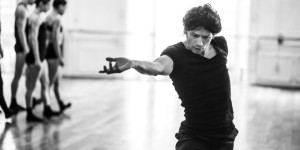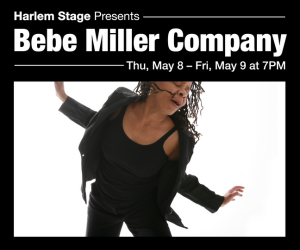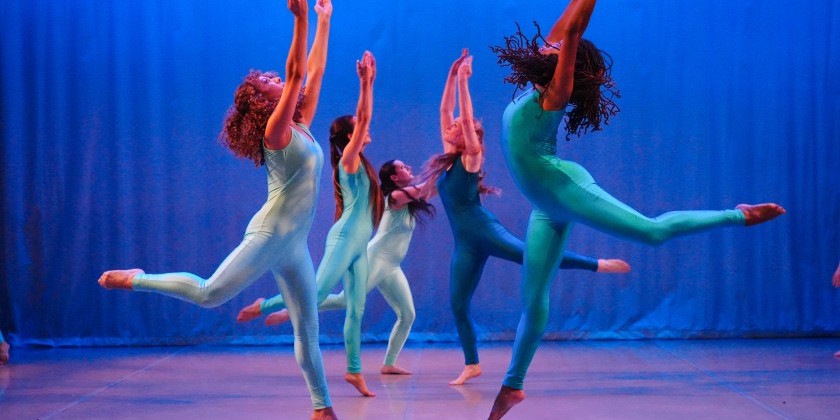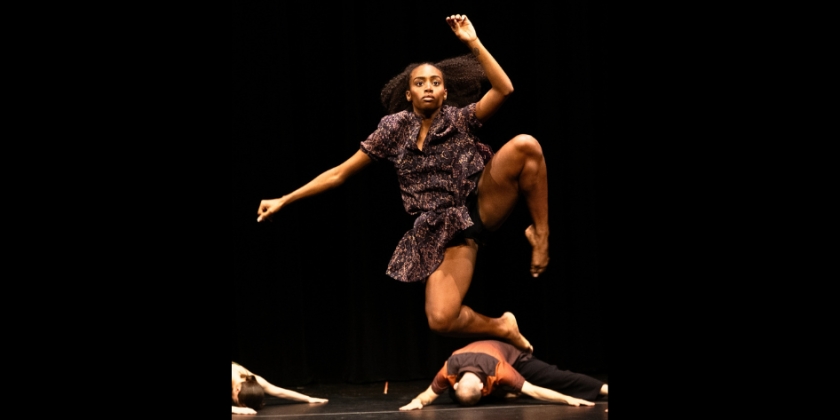Martha Graham Dance Company at The Joyce Theater in "Sacred/Profane" with Premieres by Annie-B Parson and Sidi Larbi Cherkaoui

Impressions of Martha Graham Dance Company
The Joyce Theater
Clytemnestra Act 2, Dark Meadow Suite, Diversion of Angels, Maple Leaf Rag, Primitive Mysteries / Choreography by Martha Graham
Ekstasis / Choreography by Martha Graham / Reimagined by Virginie Mecene
I Used to Love You (world premiere) / Choreography by Annie-B Parson
Mosaic (world premiere) / Choreography by Sidi Larbi Cherkaoui
Rust / Choreography by Nacho Duato
Sacred/Profane / Video by Peter Sparling
Woodland / Choreography by Pontus Lidberg
Pictured above: Xin Ying and Abdiel Jacobsen (center) and the Martha Graham Dance Company in Sidi Larbi Cherkaoui’s Mosaic.
To dancers, modern can mean a couple of things. As a common noun, it refers to a style of moving that emphasizes gravity, freedom, experimentalism, and individuality. The proper noun, Modern, signifies an era in the first half of the 20th century when dance pioneers like Ruth St. Denis, Doris Humphrey, and Isadora Duncan threw off the literal and metaphorical strictures of corsets and tutus.
Whether you’re talking modern or Modern, one figure stands above the rest: Martha Graham. Born in 1894, she created an eponymous technique and 181 dances. Although she died in 1991, the Martha Graham Dance Company, under the artistic direction of Janet Eilber, tours globally to keep Graham’s contributions front and center. It also commissions work from contemporary choreographers — honoring the Modern while staying modern.

In its two-week run at The Joyce Theater, entitled Sacred/Profane (you decide which is which or which are both), the company showcases its founder’s instinct for dramatic, iconic works replete with searing imagery. Three repertory programs present five Graham staples, one reimagining of a lost work, four pieces by hot dance-makers, two of which are world premieres, plus one video by Peter Sparling.
It’s a prodigious undertaking, but the dancers are up to the challenge. Comely but hardy, they perform with no muss and no fuss as their taut abs ripple — perhaps Graham technique should inspire the next big exercise craze?
Graham took a breath and then built a vocabulary by expanding inhale-exhale into contraction-release. In a contraction, the spine curls into a generous C. In a release, it may return to its normal state or arc to another position. Along with cupped hands, floor work, and spirals (body parts moving in opposition to each other), the idiom’s power lays not its dynamics, which are stately, but in its sculptural specificity, which is imposing and ceremonious — like yoga theatricalized.

Pieces by Graham range from the ‘30s to her last work, the satirical Maple Leaf Rag with a Scott Joplin score. Although more melodramatic than 21st-century audiences are used to, her dances demonstrate lasting power. In Dark Meadow Suite, the highlights version of a 1946’s Dark Meadow, a cast of eleven skitters on their heels and ritualistically poses against a burnt orange backdrop. The pathos of an arched or bowed spine relates the rage and despair of characters in the operatic Clytemnestra Act 2. Ekstasis, an intriguing re-envisioning by Virginie Mecene, features the luminous Peiju Chien-Pott wiggling like a twitchy letter S. In Primitive Mysteries, twelve women frame one white-clad dancer, in a show of Catholic mysticism evoked through the imagery of the American Southwest. Romance reigns in Diversion of Angels where three principal couples smile as they side tilt.
The benefit of building a company on a nuts-and-bolts technique becomes manifest in the non-Graham works. The dancers easily swing between the magical lyricism of Pontus Lidberg’s Woodland and the slinky hip swivels of Sidi Larbi Cherkaoui’s Mosaic. Annie-B Parson’s reverently irreverent dance-theater number, I Used to Love You, flirts with and comments on Graham’s comic ballet, Punch and the Judy. (I was unable to catch Nacho Duato’s Rust. Due to injuries, it was canceled the second week.) Graham’s motifs accentuate each choreographer’s viewpoint: Lidberg’s mellifluousness, Cherkaoui’s sinuousness, Parson’s cleverness. Everyone is made richer by the synthesis.

With aplomb, Martha Graham Dance Company continues to be a trailblazer, ninety-plus years after its founding. Its appeal, though, goes beyond hitting the predictable notes of great dancing, choreography, and administration.
In Graham herself, it has a figure who changed the look and the feel of femininity. Rooted yet regal, elegant in a stag leap yet imperious in an extravagant contraction, she demanded — insistently and persistently — the mythology of women be rewritten. As we grapple with 21st-century feminism, Graham’s characterizations of women remain significant. She helped us understand who we could be. Maybe she can help us understand who we can be.
















